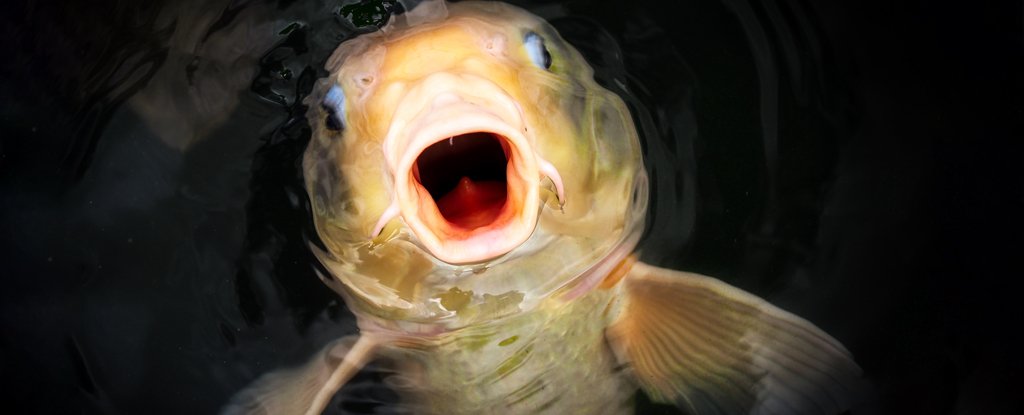
It has long been a mystery how some fish can colonise isolated lakes and ponds surrounded by inhospitably dry land. It's not like fish can get out of the water, shake themselves off, and walk between far-flung pools to spread their spawn.
Yet, from remote crater lakes to desert ponds, these fish are somehow there. Did birds shuttle them in, perhaps? The softness of fish eggs has had biologists thinking the spawn are too squishy to survive an epic adventure through a bird's digestive system. But all may not be what it seems.
A new study has shown that most fish eggs really don't make it out the other side of a duck's digestive tract - but a teeny tiny 0.2 percent were pooped out and still viable. So, while busy doing all their important developmental things, these few egg-encased fish embryos endured being squeezed through body tubes, pummelled in a gizzard, assailed by digestive enzymes, and squashed through a bird's bottom.
This type of journey, called endozoochory (dispersal via the gut of an animal), is a common transport tactic for plant seeds; it's also known in some insects. But the first evidence that fish also have this ability was only found last year, when eggs of killifish survived to hatch after being eaten by a swan.
However, killifish eggs are unusually tough - able to survive dry soil for months in a kind of hibernation, until rains return to their ephemeral desert pools.
It has been widely assumed fish eggs travelled to such secluded locations by catching a sticky lift on bird legs, beaks and feathers, but there was no actual evidence for this. Until now, we didn't know if such eggs could make it through bird bodies alive.
To test the idea, biologist Ádám Lovas-Kiss from the Danube Research Institute in Hungary and colleagues fed captive mallard ducks (Anas platyrhynchos) eggs from two types of carp - common carp (Cyprinus carpio) and Prussian carp (Carassius gibelio).
Each of the eight birds was fed around 500 eggs. Of all these, 18 eggs were recovered from the ducks' poop. Twelve were still viable, but only 3 successfully hatched.
While the odds might seem terrible, when you consider all the available fish eggs and all the waterbirds known to enjoy feasting on nutritious roe, it all adds up. A single common carp can lay up to 1.5 million eggs in one spawning event, and during certain parts of the year fish eggs can make up 100 percent of the stomach content of some waterbirds. A staggering 63,501 fish eggs were once found in a glaucous gull's (Larus hyperboreus) stomach.
"Such survival was not a freak event," the team explained in their paper. It "occurred in 75 percent of the experimental ducks and in both fish species studied."
Most of the fish embryos that made it all the way through the birds but then failed to hatch, succumbed to a fungal infection that also decimated the control eggs which didn't have to travel through a duck.
This fungal presence was likely due to experimental set-up, as it is a known problem in artificial fish breeding, so the researchers suspect more eggs would survive through to hatching in the wild.
It took most of the carp eggs only an hour to make their way from one end of the duck out to the other. The team calculated this means a dispersal range of around 60 kilometres (37 miles) for eggs taking their journey via duck. One of the eggs, however, hatched after 4-6 hours, increasing that range to a maximum of 360 kilometres (220 miles).
This explains a lot. Carp are notoriously invasive species. Common carp have come to dominate many Australian waterways, composing over 80 percent of fish biomass in some areas. They cause damage to fragile ecosystems by modifying waterways through their mud-sucking feeding habits, they take valuable food away from native species, and contribute to algal blooms.
Carps' ability to disperse via endozoochory, along with their adaptability across many environment types, helps to explain their incredible success in invading new lands and is a key piece of information for people trying to manage their invasions.
"Given the abundance, diet, and movements of ducks in nature, our results have major implications for biodiversity conservation and invasion dynamics in freshwater ecosystems," Lovas-Kiss and colleagues concluded.
This research was published in PNAS.
"fish" - Google News
July 01, 2020 at 03:04PM
https://ift.tt/31yc3Mh
We May Finally Know The Extreme Route Fish Take Through Air to Colonise New Lakes - ScienceAlert
"fish" - Google News
https://ift.tt/35JkYuc
https://ift.tt/3feFffJ
Bagikan Berita Ini















0 Response to "We May Finally Know The Extreme Route Fish Take Through Air to Colonise New Lakes - ScienceAlert"
Post a Comment